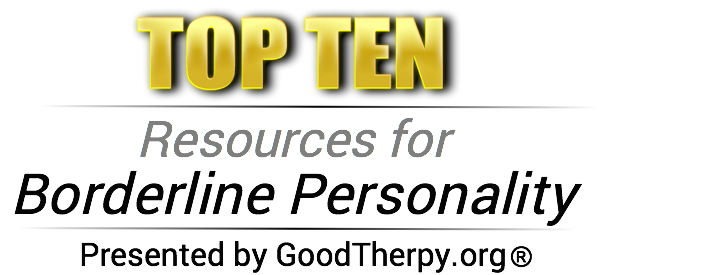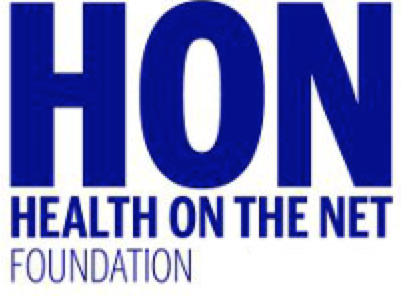The Five Dimensions of the Human Personality
Confused by symptoms lists on the Internet, often with names like "100 Red Flags" or "Top 100 Personality Disorder Traits" and containing common conflict variables like anger, blaming, circular arguments, cheating, scapegoating, selective memory, etc. The problem with these amateur lists is that they will incriminate everyone you ever had a conflict with. There are 17 trillion possible combinations of 10 in a list of 100 items. There are 350 million people in the United States.
To be useful a list should help us understand between a person exhibiting difficult behavior, a person having some dysfunctional personality traits, and clinical-grade mental illness. The list should also lead us into a process of gaining insight into the person with whom we are dealing. Things we'd like to know are how to:
- interpret their actions and words
- understand inconsistencies or things that don't seem right
- assess the relationship and its prognosis to improve
- gives us clues as to if or how we can help the other person
- improve our skills to communicate with them
Personality Disorder Types - Five Trait Domains
Carl G. Jung's theory of psychological types [Jung, 1971] is the principle behind what we have all come to know as personality types. Jung created three scales and asserted that people either score high or low on each. Isabel Briggs Myers, a researcher and practitioner of Jung’s theory, added a fourth scale [Briggs Myers, 1980] when developing the Myers–Briggs Personality Type Indicator (click to see test), a tool used by organizations around the world to help people understand and work through the inherent conflicts that develop when certain personality types interact.
The American Psychiatric Association in the DSM 5 manual of mental illness uses a similar system based on five scales ("trait domains"). These are the indices used to make determinations of personality disorder types, measure their severity, gauge the improvement in treatment, etc. Different combinations of the facets are indicative of different disorders such as Borderline Personality, Obsessive Compulsive Disorder, Narcissistic Personality, etc.
The trait domains also conceptually align with all of the prominent personality style models such as the five-factor model of personality (The Big Five), the Keirsey Temperaments, and Myers–Briggs Type Indicator. For example the Myers–Briggs INTP Personality has been correlated with Schizotypal Personality Disorder and ISTJ Personality has been correlated with to Obsessive-compulsive Personality Disorder.
The five trait domains are:
-
Negative Affectivity vs Emotional Stability Frequent and intense experiences of high levels of a wide range of negative emotions (e.g., anxiety, depression, guilt/ shame, worry, anger) and their behavioral (e.g., self-harm) and interpersonal (e.g., dependency) manifestations.
-
Detachment vs Extraversion Avoidance of socioemotional experience, including both withdrawal from interpersonal interactions (ranging from casual, daily interactions to friendships to intimate relationships) and restricted affective experience and expression, particularly limited hedonic capacity.
-
Antagonism vs Agreeableness Behaviors that put the individual at odds with other people, including an exaggerated sense of self-importance and a concomitant expectation of special treatment, as well as a callous antipathy toward others, encompassing both an unawareness of others' needs and feelings and a readiness to use others in the service of self-enhancement.
-
Disinhibition vs Conscientiousness Orientation toward immediate gratification, leading to impulsive behavior driven by current thoughts, feelings, and external stimuli, without regard for past learning or consideration of future consequences.
-
Psychoticism vs. Lucidity Exhibiting a wide range of culturally incongruent odd, eccentric, or unusual behaviors and cognitions, including both process (e.g., perception, dissociation) and content (e.g., beliefs).
Personality Disorder Trait Domains and Facets
The lists below contains descriptions of the conditions or criteria used by experts to identify people who suffer from personality disorders. Would you answer "yes" to two or more of the following? Does the person in your life have a history of emotional instability? Have they always been significantly detached (introverted)? Do they approach relationships with an antagonistic style? Have they always been uninhibited - to levels that have caused them serious problems? Do they have some odd, eccentric, or unusual behaviors and thoughts?
The severity of the facets is an important part of the criteria - for a personality disorder, facets need to be significantly above what one might reasonably expect. The occurrence of the facets, over a lifetime is also critical, either appearing consistently from teen years through adulthood, or surfacing periodically over a persons adult life (e.g., common in times of stress). Although a small number of severe, pervasive facets may be enough to qualify as a personality disorder, the number of facets can determine the difference between a diagnosable personality disorder and someone who is exhibiting tendencies of a personality disorder. For example, with Narcissistic Personality, many people qualify as exhibiting tendencies of a personality disorder, but not the personality disorder.
If you're seeing a person in your life with these characteristics, it's a sign to look further. See personaity disorder criteria.
Trait Domain: Negative Affectivity vs Emotional Stability
Frequent and intense experiences of high levels of a wide range of negative emotions (e.g., anxiety, depression, guilt/ shame, worry, anger) and their behavioral (e.g., self-harm) and interpersonal (e.g., dependency) manifestations.
- Emotional lability Instability of emotional experiences and mood; emotions that are easily aroused, intense, and/or out of proportion to events and circumstances.
- Anxiousness Feelings of nervousness, tenseness, or panic in reaction to diverse situations; frequent worry about the negative effects of past unpleasant experiences and future negative possibilities; feeling fearful and apprehensive about uncertainty; expecting the worst to happen.
- Separation insecurity Fears of being alone due to rejection by—and/or separation from— significant others, based on a lack of confidence in one's ability to care for oneself, both physically and emotionally.
- Submissiveness Adaptation of one's behavior to the actual or perceived interests and desires of others even when doing so is antithetical to one's own interests, needs, or desires.
- Hostility Persistent or frequent angry feelings; anger or irritability in response to minor slights and insults; mean, nasty, or vengeful behavior. See also Antagonism.
- Perseveration Persistence at tasks or in a particular way of doing things long after the behavior has ceased to be functional or effective; continuance of the same behavior despite repeated failures or clear reasons for stopping.
- Depressivity Frequent feelings of being down, miserable, and/or hopeless; difficulty recovering from such moods; pessimism about the future; pervasive shame; feeling of inferior self-worth; thoughts of suicide and suicidal behavior.
- Suspiciousness Expectations of – and heightened sensitivity to – signs of interpersonal ill-intent or harm; doubts about loyalty and fidelity of others; feelings of persecution.
- Restricted affectivity (lack of) Little reaction to emotionally arousing situations; constricted emotional experience and expression; indifference or coldness.
Trait Domain: Detachment vs Extraversion
Avoidance of socioemotional experience, including both withdrawal from interpersonal interactions (ranging from casual, daily interactions to friendships to intimate relationships) and restricted affective experience and expression, particularly limited hedonic capacity.
- Withdrawal Preference for being alone to being with others; reticence in social situations; avoidance of social contacts and activity; lack of initiation of social contact.
- Intimacy avoidance Avoidance of close or romantic relationships, interpersonal attachments, and intimate sexual relationships.
- Anhedonia Lack of enjoyment from, engagement in, or energy for life's experiences; deficits in the capacity to feel pleasure and take interest in things.
- Depressivity Feelings of being down, miserable, and/or hopeless; difficulty recovering from such moods; pessimism about the future; pervasive shame and/or guilt; feelings of inferior self-worth; thoughts of suicide and suicidal behavior.
- Restricted affectivity Little reaction to emotionally arousing situations; constricted emotional experience and expression; indifference and aloofness in normatively engaging situations.
- Suspiciousness Expectations of—and sensitivity to—signs of interpersonal ill- intent or harm; doubts about loyalty and fidelity of others; feelings of being mistreated, used, and/or persecuted by others.
Trait Domain: Antagonism vs Agreeableness
Behaviors that put the individual at odds with other people, including an exaggerated sense of self-importance and a concomitant expectation of special treatment, as well as a callous antipathy toward others, encompassing both an unawareness of others' needs and feelings and a readiness to use others in the service of self-enhancement.
- Manipulativeness Use of subterfuge to influence or control others; use of seduction, charm, glibness, or ingratiation to achieve one's ends.
- Deceitfulness Dishonesty and fraudulence; misrepresentation of self; embellishment or fabrication when relating events.
- Grandiosity Believing that one is superior to others and deserves special treatment; self-centeredness; feelings of entitlement; condescension toward others.
- Attention seeking Engaging in behavior designed to attract notice and to make oneself the focus of others' attention and admiration.
- Callousness Lack of concern for the feelings or problems of others; lack of guilt or remorse about the negative or harmful effects of one's actions on others.
- Hostility Persistent or frequent angry feelings; anger or irritability in response to minor slights and insults; mean, nasty, or vengeful behavior.
Trait Domain: Disinhibition vs Conscientiousness
Orientation toward immediate gratification, leading to impulsive behavior driven by current thoughts, feelings, and external stimuli, without regard for past learning or consideration of future consequences.
- Irresponsibility Disregard for—and failure to honor—financial and other obligations or commitments; lack of respect for—and lack of follow- through on—agreements and promises; carelessness with others' property.
- Impulsivity Acting on the spur of the moment in response to immediate stimuli; acting on a momentary basis without a plan or consideration of outcomes; difficulty establishing and following plans; a sense of urgency and self-harming behavior under emotional distress.
- Distractibility Difficulty concentrating and focusing on tasks; attention is easily diverted by extraneous stimuli; difficulty maintaining goal- focused behavior, including both planning and completing tasks.
- Risk taking Engagement in dangerous, risky, and potentially self-damaging activities, unnecessarily and without regard to consequences; lack of concern for one's limitations and denial of the reality of personal danger; reckless pursuit of goals regardless of the level of risk involved.
- Rigid perfectionism Rigid insistence on everything being flawless, perfect, and without errors or faults, including one's own and others' performance; sacrificing of timeliness to ensure correctness in every detail; believing that there is only one right way to do things; difficulty changing ideas and/or viewpoint; preoccupation with details, organization, and order. The lack of this facet characterizes low levels of Disinhibition.
Trait Domain: Psychoticism vs. Lucidity
Exhibiting a wide range of culturally incongruent odd, eccentric, or unusual behaviors and cognitions, including both process (e.g., perception, dissociation) and content (e.g., beliefs).
- Unusual beliefs and experiences Belief that one has unusual abilities, such as mindreading, telekinesis, thought-action fusion, unusual experiences of reality, including hallucination-like experiences.
- Eccentricity Odd, unusual, or bizarre behavior, appearance, and/or speech; having strange and unpredictable thoughts; saying unusual or inappropriate things.
- Cognitive and perceptual dysregulation Odd or unusual thought processes and experiences, including depersonalization, derealization, and dissociative experiences; mixed sleep-wake state experiences; thought-control experiences.
Borderline Personality Disorder





